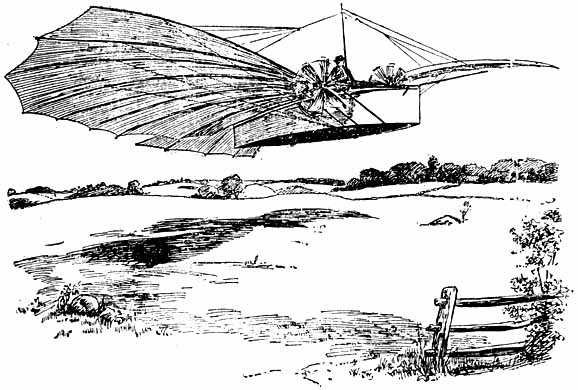http://en.wikipedia.org/wiki/Whitehead_No._21 wrote: <<Gustave Albin Whitehead, born Gustav Albin Weisskopf, (1 January 1874 – 10 October 1927) was an aviation pioneer who emigrated from Germany to the United States where he designed and built gliders, flying machines and engines between 1897 and 1915. Controversy surrounds published accounts and Whitehead's own claims that he flew a powered machine successfully several times in 1901 and 1902, predating the first flights by the Wright Brothers in 1903.
The Whitehead No.21 was the aircraft that aviation pioneer Gustave Whitehead claimed to have flown near Bridgeport, Connecticut on August 14, 1901. Recently, the 100th anniversary edition of Jane's All the World's Aircraft has credited Whitehead as the first man to build and fly an operational heavier-than-air flying machine.
The flight was reported in the August 18, 1901 issue of the Bridgeport Sunday Herald and was reprinted in the New York Herald, the Boston Transcript and the Washington Times, which ran it on 23 August 1901. Within months, the story ran in nine other newspapers in all parts of the country, as far away as California and Arizona. No photographs were taken, but a drawing of the aircraft in flight accompanied the Sunday Herald article.
The No.21 was a wire-braced monoplane with bat-like wings and triangular horizontal tail. There was no vertical fin, and lateral control was intended to be accomplished by shifting the pilot's body sideways. The wings were constructed with radial bamboo ribs and covered with silk, and had a span of 36 ft. They had noticeable dihedral, which would have contributed to the aircraft's stability had it ever flown, and could be folded like a fan for transport. The fuselage was of rectangular box section with constant height, curved to taper inwards at front and rear when seen from above. Four small wheels were fixed to the bottom.
Although having two engines and twin propellers, the aircraft was not a conventional twin. It had separate engines for ground running and flight, both designed and made by Whitehead. The ground engine was of 10 hp and drove the wheels to reach takeoff speed. Propulsion was then changed to a 20 hp acetylene engine driving two counter-rotating tractor propellers mounted on outriggers. The aircraft could supposedly take off under its own power and without assistance. According to Whitehead and a reporter supposedly at the event, the monoplane's longest flight was 60 meters (200 feet) above ground for 800 meters (0.5 miles). These claims are contested. Whitehead did not keep a log book or document his work. In an article in the August 18, 1901 issue of the Bridgeport Sunday Herald the reporter states he witnessed a night test of the plane, at first unpiloted but loaded with sand bags, and later with Whitehead at the controls. Whitehead reportedly made four flights that day, supporters of Whitehead's claims offer that as the reason for conflicting accounts from different witnesses. The conflicts have been used by opponents of the claims to question whether any flights took place.
Before his reported 14 August flight, Whitehead was quoted in a 26 July article in the Minneapolis Journal, credited to the New York Sun, in which he described the first two trial flights of his machine on 3 May. Andrew Cellie and Daniel Varovi were mentioned as his financial backers and assisted in the trial flights. The machine was unmanned and carried 220 pounds of sand as ballast and flew to an altitude of 40 to 50 feet for an 1/8 of a mile 650 feet. According to Whitehead, the machine flew a distance of 1/2 mile 2,600 feet during its second test flight for one and one-half minutes before crashing into a tree. He also explained his desire to keep the location of any future experiments hidden to avoid drawing a crowd who might make a "snap-shot verdict of failure".>>
The Whitehead No.21
- neufer
- Vacationer at Tralfamadore
- Posts: 18805
- Joined: Mon Jan 21, 2008 1:57 pm
- Location: Alexandria, Virginia
The Whitehead No.21
Art Neuendorffer

